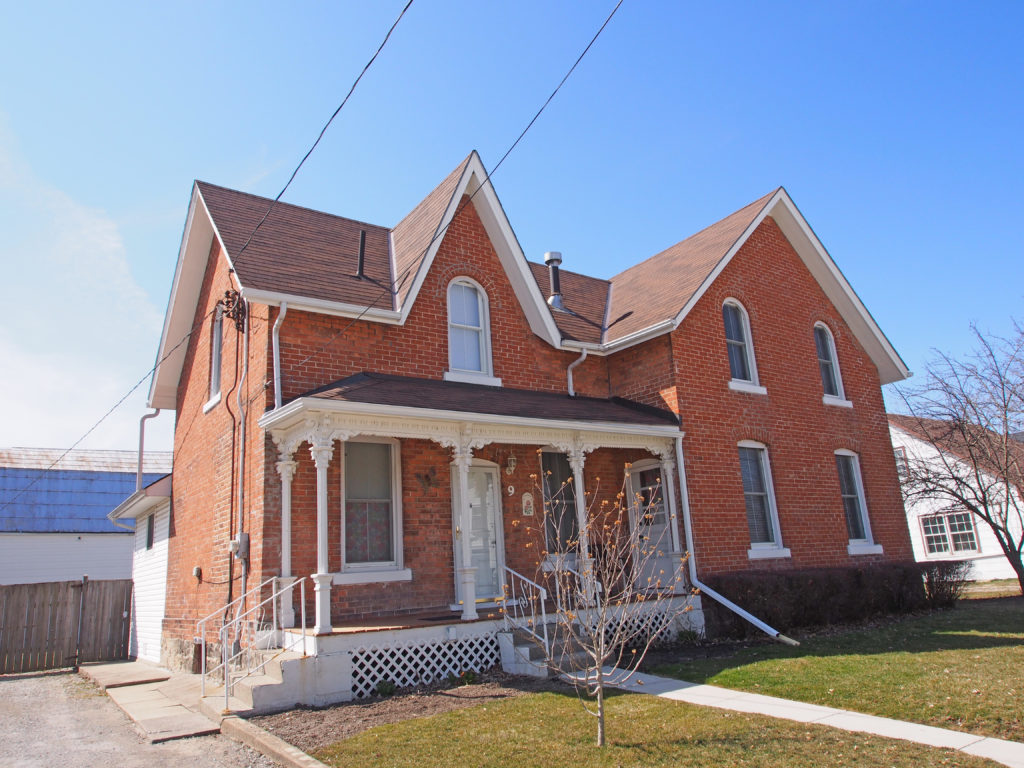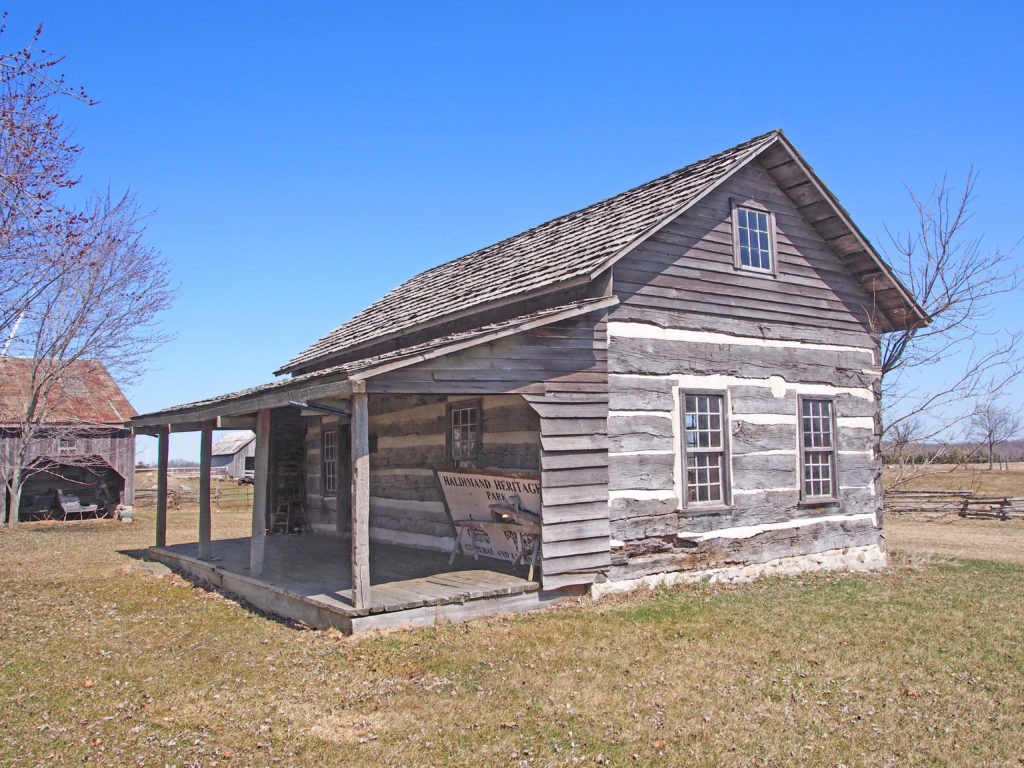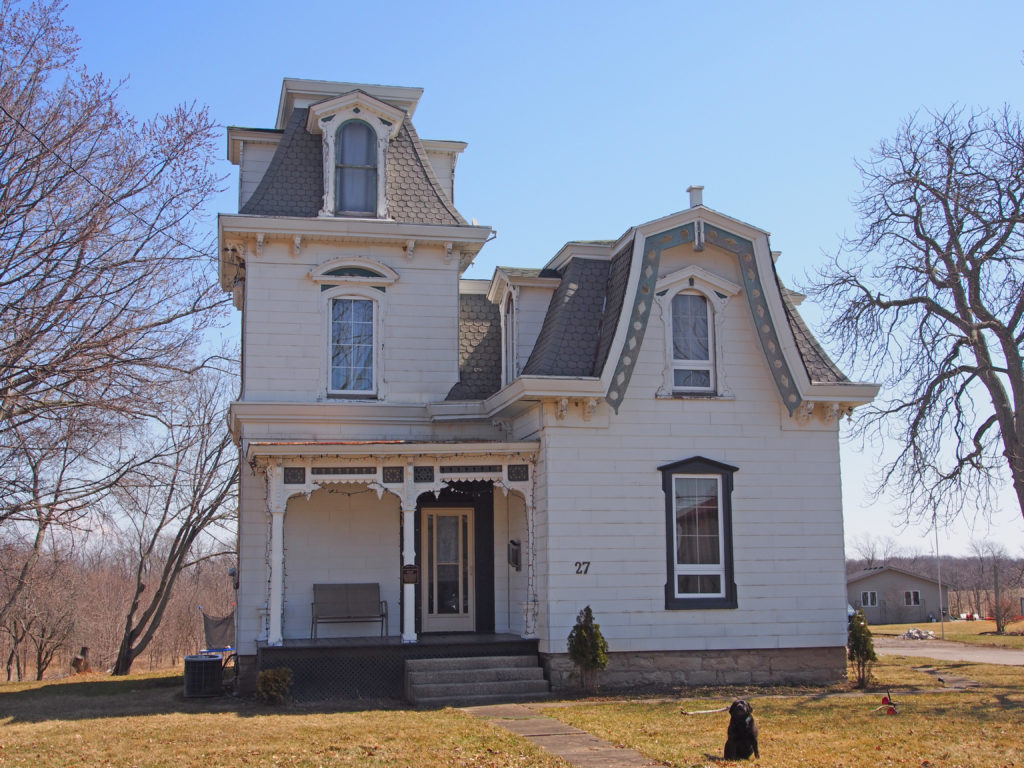Fisherville, Nanticoke, Selkirk, Ontario
Haldimand County is a municipality on the Niagara Peninsula in Southern Ontario, on the north shore of Lake Erie, and on the Grand River. Haldimand was first created as a county in 1800, from a portion of Norfolk. It was named after the governor of the Province of Quebec Sir Frederick Haldimand. From 1974 to 2000, Haldimand County and Norfolk County were merged to form the Regional Municipality of Haldimand-Norfolk.
The population centers in Haldimand are Caledonia, Dunnville, Hagersville, Jarvis and Cayuga. Most of Haldimand is agricultural land, although some heavy industry, including the Nanticoke Generating Station, is located here. Some of the smaller communities within the municipality are Byng, Canborough, Canfield, Cheapside, Fisherville, Kohler, Lowbanks, Nanticoke, Rainham Centre, Selkirk, South Cayuga, Sweets Corners, and York.
The first white inhabitants of Rainham were Jacob Hoover with his sons Abraham, David, Benjamin and Daniel who came from Pennsylvania in 1791, traveling in wagons in which they carried all their moveable possessions.
They purchased about 2,500 acres of land from the government. The Hoovers were Mennonites of Swiss descent. The Hoovers were a thrifty and industrious family and soon had large clearings. They became wealthy as they were the first settlers who had any surplus produce to sell to others who came a few years later.
Manufactured items were very expensive so the settlers made as many items as they could. Many of them made their own harness of basswood bark boiled in lye which was a fair substitute for leather.
The township covers about 25,000 acres with stiff clay soil that is very productive and well cultivated. Fisherville and Rainham Centre are the only villages wholly in the township. Fisherville is the center of the German settlement and has a population of about one hundred and fifty people.
Nanticoke is located on the western border of Haldimand County. Nanticoke is located directly across Lake Erie from the United States city of Erie, Pennsylvania. Unlike the majority of Haldimand or Norfolk County, Nanticoke is a highly industrialized community. This community is southeast of Simcoe in neighboring Norfolk County and south of Brantford. Nanticoke’s residential area is bordered on the west by the Nanticoke Industrial Park, home to the U.S. Steel Canada Lake Erie Works and a number of smaller businesses.
The Esso Refinery Nanticoke is on the northeast, and the Nanticoke Generating Station is on the southeast. Nanticoke used to be a bustling farming and fishing community inhabited since the late eighteenth century. Nanticoke adapted to the Industrial Revolution and became a desired spot for heavy industry.
In 1974, Nanticoke was incorporated as a city within the Regional Municipality of Haldimand-Norfolk through the amalgamation of the towns of Port Dover and Waterford, the village of Jarvis, and parts of the townships of Rainham, Townsend, Walpole and Woodhouse. In 2001, the town and all other municipalities within the region were dissolved and the region was divided into two single tier municipalities with city-status but called counties. What was the city of Nanticoke is now split between Haldimand County and Norfolk County. Wind Turbines were installed in November 2013.
Cheapside is located in the Regional Municipality of Haldimand-Norfolk and is part of the City of Nanticoke. I n 1854 David Silverthom settled here and opened the first store. He was bought out in 1860 by William Pugsley who called the place Cheap Corner. When the post office opened around 1865 the postal department proposed the present name which was accepted by residents.
Lake Erie
shoreline, quiet roads and countryside make Selkirk a haven for travelers.
Selkirk is located forty-five kilometers southwest of Hamilton and a short
drive from Dunnville, Cayuga, Port Dover and Simcoe. Selkirk
is the oldest village in Walpole Township. Settled by the Hoover family around
1800, the village was the site of a mill and an important center for the local
farming community. When the post office opened in 1831 the village was
called Walpole. In 1855, the village was renamed Selkirk, in honor of Thomas
Douglas, Lord Selkirk, who once owned land in the area.

















